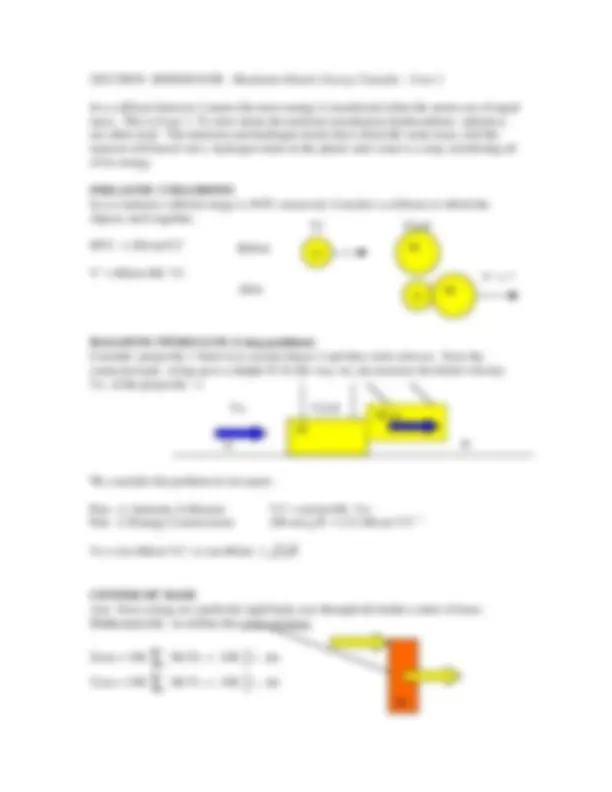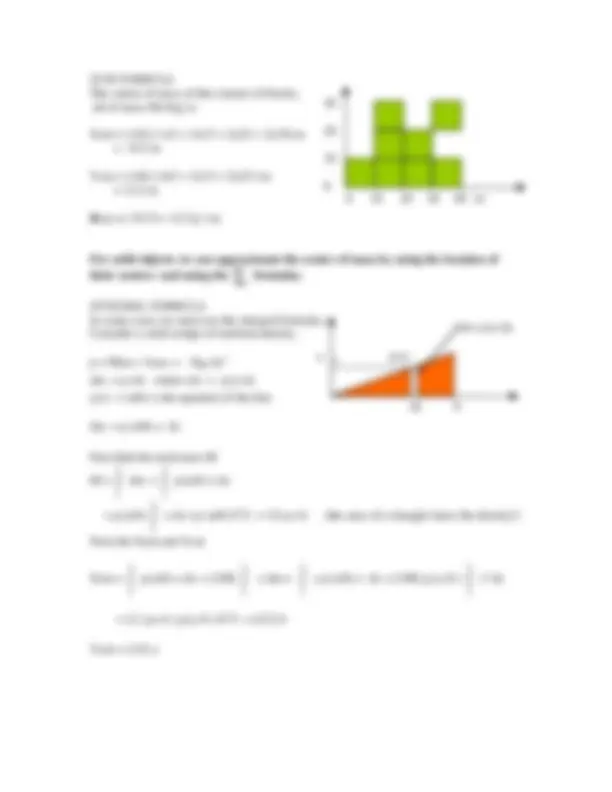




Study with the several resources on Docsity

Earn points by helping other students or get them with a premium plan


Prepare for your exams
Study with the several resources on Docsity

Earn points to download
Earn points by helping other students or get them with a premium plan
Community
Ask the community for help and clear up your study doubts
Discover the best universities in your country according to Docsity users
Free resources
Download our free guides on studying techniques, anxiety management strategies, and thesis advice from Docsity tutors
In physics we define force as the time rate of change of momentum. ... Momentum Conservation always hold whether the collision is elastic or inelastic!
Typology: Exams
1 / 4

This page cannot be seen from the preview
Don't miss anything!



CHAPTER 9- CONSERVATION of MOMENTUM
DEFINITION of MOMENTUM In physics we define force as the time rate of change of momentum. Momentum as force is a vector quantity.
F = d P /dt where P = M V
COLLISONS In a collision between objects the internal forces are equal and opposite thus balance. The net work performed is zero! Since F = M dV/dt = d/dt (MV) = 0 we say that the net Momentum = MV in the collision is conserved.
Pi = M VI for the ith particle
d/dt ( P1 + P2 + P3 + ..) = 0 then P1 + P2 + P3 = Constant
Momentum Conservation always hold whether the collision is elastic or inelastic! In elastic collision energy is conserved, in inelastic collisions energy is not conserved.
IMPULSE I = ∆ P We define the impulse on an object felt in a collision as the integral of the force exerted upon it over the time of impact. Below we see that I = ∆ P.
In the elastic collision of a ball with a solid wall where V = V’ the Impulse is calculated
I = (Pf – Pi) i = (- m V’ ) - (m V) = -2mV i
Note that the signs (directions) of the velocity vectors are important!
Net forces balance.
m
m
before
after
Elastic collisions are impacts where energy as well as momentum is conserved. Note that the signs (directions) of the velocity vectors are important.
m V1 - MV2 = -m V1’ + M V2’ 1/2 m V1^2 + 1/2 MV2^2 = 1/2 m V1’^2 + 1/2 M V2’^2
Solving this set of two equations for V1’ and V2’ the final velocities
V1’ = [(m-M)/(m+M)] V1 + (2M)/(m+M) V2 eq 9- V2’ = (2m)/(m+M)] V1 + [(M-m)/(m+M)] V2 eq 9-
Case I : m=M V2 =0 For equal masses they exchange velocities. V1’ = 0 This we observe when the cue ball hits another V2’ = V1 straight on.
Case II M>>m V2 =0 We expect M to barely move and m to recoil V1’ = -V1 letting M>>m in eq 9- V2’ ≅ 0
Case III m>>M V2=0 We expect both to move to he right V1’ = V V2’ = 2V
m M
m M V2’
before
after
Before
After
Before
After
Before
After
The center of mass of this cluster of blocks, all of mass M=1kg is:
Xcm = (1/8) [ 1x5 + 3x15 + 2x25 + 2x35] m = 19.5 m
Ycm = (1/8) [ 4x5 + 2x15 + 2x25 ] m = 12.5 m
R cm =( 19.5 i + 12.5 j ) m
For solid objects we can approximate the center of mass by using the location of
In some cases we must use the integral formulas. Consider a solid wedge of uniform density.
ρ = Mass / Area. = 1kg /m^2
dm = ρ dA where dA = y(x) dx
y(x) = (a/b) x the equation of the line
dm = ρ (a/b) x dx
First find the total mass M
M = 0
b
0
b
= ρ (a/b) 0
b
(^2) /2 = 1/2 ρ a b (the area of a triangle times the density!)
Next the Xcm and Ycm
Xcm = 0
b
0
b
0
b
0
b
(^2) dx
= (2 / ρ a b ) ρ (a /b ) b^3 /3 = (2/3) b
Ycm = (1/3) a
0 10 20 30 40 m
a
b
y(x)
dx
dA= y(x) dx